
概述
Java应用中,日志一般分为以下5个级别:
- ERROR 错误信息
- WARN 警告信息
- INFO 一般信息
- DEBUG 调试信息
- TRACE 跟踪信息
Spring Boot使用Apache的Commons Logging作为内部的日志框架,其仅仅是一个日志接口,在实际应用中需要为该接口来指定相应的日志实现。
SpringBt默认的日志实现是Java Util Logging,是JDK自带的日志包,此外SpringBt当然也支持Log4J、Logback这类很流行的日志实现。
统一将上面这些日志实现统称为日志框架
下面我们来实践一下!
使用Spring Boot Logging插件
- 首先application.properties文件中加配置:
logging.level.root=INFO- 控制器部分代码如下:
package com.hansonwang99.controller;
import com.hansonwang99.K8sresctrlApplication;
import org.slf4j.Logger;
import org.slf4j.LoggerFactory;
import org.springframework.web.bind.annotation.GetMapping;
import org.springframework.web.bind.annotation.RequestMapping;
import org.springframework.web.bind.annotation.RestController;
@RestController
@RequestMapping("/testlogging ")
public class LoggingTestController {
private static Logger logger = LoggerFactory.getLogger(K8sresctrlApplication.class);
@GetMapping("/hello ")
public String hello() {
logger.info("test logging... ");
return "hello ";
}
}- 运行结果
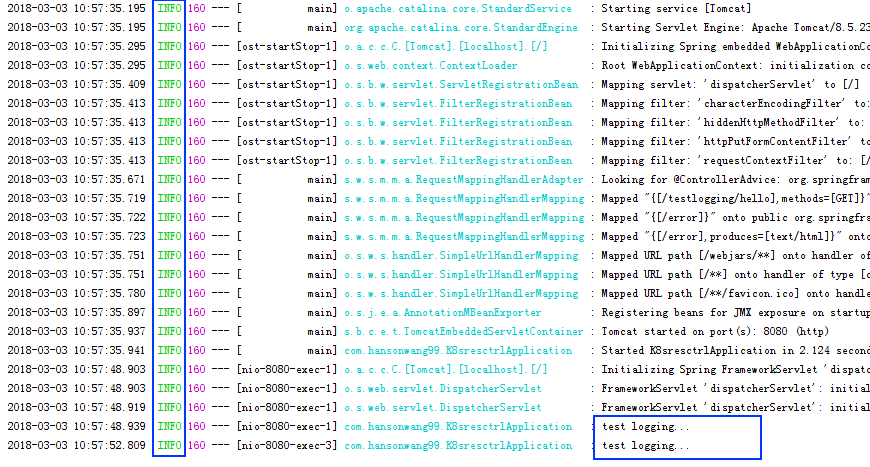
由于将日志等级设置为INFO,因此包含INFO及以上级别的日志信息都会打印出来
这里可以看出,很多大部分的INFO日志均来自于SpringBt框架本身,如果我们想屏蔽它们,可以将日志级别统一先全部设置为ERROR,这样框架自身的INFO信息不会被打印。然后再将应用中特定的包设置为DEBUG级别的日志,这样就可以只看到所关心的包中的DEBUG及以上级别的日志了。
- 控制特定包的日志级别
application.yml中改配置
logging:
level:
root: error
com.hansonwang99.controller: debug很明显,将root日志级别设置为ERROR,然后再将com.hansonwang99.controller包的日志级别设为DEBUG,此即:即先禁止所有再允许个别的 设置方法
- 控制器代码
package com.hansonwang99.controller;
import org.slf4j.Logger;
import org.slf4j.LoggerFactory;
import org.springframework.web.bind.annotation.GetMapping;
import org.springframework.web.bind.annotation.RequestMapping;
import org.springframework.web.bind.annotation.RestController;
@RestController
@RequestMapping("/testlogging ")
public class LoggingTestController {
private Logger logger = LoggerFactory.getLogger(this.getClass());
@GetMapping("/hello ")
public String hello() {
logger.info("test logging... ");
return "hello ";
}
}
- 运行结果
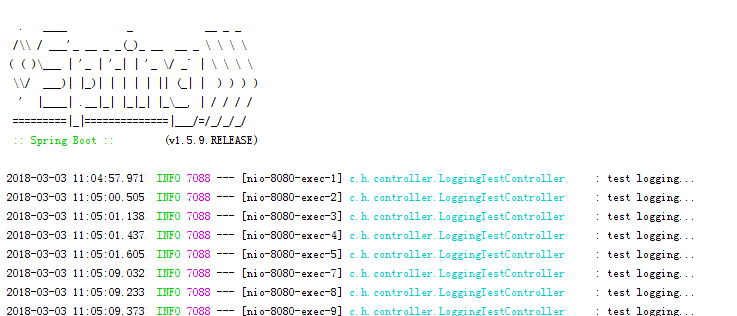
可见框架自身的INFO级别日志全部藏匿,而指定包中的日志按级别顺利地打印出来
- 将日志输出到某个文件中
logging:
level:
root: error
com.hansonwang99.controller: debug
file: ${user.home}/logs/hello.log- 运行结果


使用Spring Boot Logging,我们发现虽然日志已输出到文件中,但控制台中依然会打印一份,发现用org.slf4j.Logger是无法解决这个问题的

集成Log4J日志框架
- pom.xml中添加依赖
<dependency>
<groupId>org.springframework.boot</groupId>
<artifactId>spring-boot-starter-web</artifactId>
<exclusions>
<exclusion>
<groupId>org.springframework.boot</groupId>
<artifactId>spring-boot-starter-logging</artifactId>
</exclusion>
</exclusions>
</dependency>
<dependency>
<groupId>org.springframework.boot</groupId>
<artifactId>spring-boot-starter-log4j2</artifactId>
</dependency>- 在resources目录下添加
log4j2.xml文件,内容如下:
<?xml version="1.0 " encoding="UTF-8 "?>
<configuration>
<appenders>
<File name="file " fileName="${sys:user.home}/logs/hello2.log ">
<PatternLayout pattern="%d{HH:mm:ss,SSS} %p %c (%L) - %m%n "/>
</File>
</appenders>
<loggers>
<root level="ERROR ">
<appender-ref ref="file "/>
</root>
<logger name="com.hansonwang99.controller " level="DEBUG " />
</loggers>
</configuration>- 其他代码都保持不变
运行程序发现控制台没有日志输出,而hello2.log文件中有内容,这符合我们的预期:
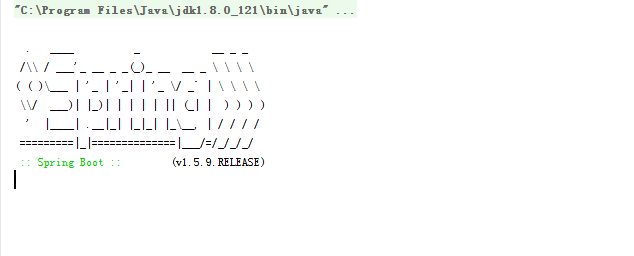


而且日志格式和pattern="%d{HH:mm:ss,SSS} %p %c (%L) - %m%n "格式中定义的相匹配
Log4J更进一步实践
- pom.xml配置:
<dependency>
<groupId>org.springframework.boot</groupId>
<artifactId>spring-boot-starter-web</artifactId>
<exclusions>
<exclusion>
<groupId>org.springframework.boot</groupId>
<artifactId>spring-boot-starter-logging</artifactId>
</exclusion>
</exclusions>
</dependency>
<dependency>
<groupId>org.springframework.boot</groupId>
<artifactId>spring-boot-starter-log4j2</artifactId>
</dependency>- log4j2.xml配置
<?xml version="1.0 " encoding="UTF-8 "?>
<configuration status="warn ">
<properties>
<Property name="app_name ">springboot-web</Property>
<Property name="log_path ">logs/${app_name}</Property>
</properties>
<appenders>
<console name="Console " target="SYSTEM_OUT ">
<PatternLayout pattern="[%d][%t][%p][%l] %m%n " />
</console>
<RollingFile name="RollingFileInfo " fileName="${log_path}/info.log "
filePattern="${log_path}/?{date:yyyy-MM}/info-%d{yyyy-MM-dd}-%i.log.gz ">
<Filters>
<ThresholdFilter level="INFO " />
<ThresholdFilter level="WARN " onMatch="DENY "
onMismatch="NEUTRAL " />
</Filters>
<PatternLayout pattern="[%d][%t][%p][%c:%L] %m%n " />
<Policies>
<!-- 归档每天的文件 -->
<TimeBasedTriggeringPolicy interval="1 " modulate="true " />
<!-- 限制单个文件大小 -->
<SizeBasedTriggeringPolicy size="2 MB " />
</Policies>
<!-- 限制每天文件个数 -->
<DefaultRolloverStrategy compressionLevel="0 " max="10 "/>
</RollingFile>
<RollingFile name="RollingFileWarn " fileName="${log_path}/warn.log "
filePattern="${log_path}/?{date:yyyy-MM}/warn-%d{yyyy-MM-dd}-%i.log.gz ">
<Filters>
<ThresholdFilter level="WARN " />
<ThresholdFilter level="ERROR " onMatch="DENY "
onMismatch="NEUTRAL " />
</Filters>
<PatternLayout pattern="[%d][%t][%p][%c:%L] %m%n " />
<Policies>
<!-- 归档每天的文件 -->
<TimeBasedTriggeringPolicy interval="1 " modulate="true " />
<!-- 限制单个文件大小 -->
<SizeBasedTriggeringPolicy size="2 MB " />
</Policies>
<!-- 限制每天文件个数 -->
<DefaultRolloverStrategy compressionLevel="0 " max="10 "/>
</RollingFile>
<RollingFile name="RollingFileError " fileName="${log_path}/error.log "
filePattern="${log_path}/?{date:yyyy-MM}/error-%d{yyyy-MM-dd}-%i.log.gz ">
<ThresholdFilter level="ERROR " />
<PatternLayout pattern="[%d][%t][%p][%c:%L] %m%n " />
<Policies>
<!-- 归档每天的文件 -->
<TimeBasedTriggeringPolicy interval="1 " modulate="true " />
<!-- 限制单个文件大小 -->
<SizeBasedTriggeringPolicy size="2 MB " />
</Policies>
<!-- 限制每天文件个数 -->
<DefaultRolloverStrategy compressionLevel="0 " max="10 "/>
</RollingFile>
</appenders>
<loggers>
<root level="info ">
<appender-ref ref="Console " />
<appender-ref ref="RollingFileInfo " />
<appender-ref ref="RollingFileWarn " />
<appender-ref ref="RollingFileError " />
</root>
</loggers>
</configuration>- 控制器代码:
package com.hansonwang99.controller;
import org.apache.logging.log4j.LogManager;
import org.apache.logging.log4j.Logger;
import org.springframework.web.bind.annotation.GetMapping;
import org.springframework.web.bind.annotation.RequestMapping;
import org.springframework.web.bind.annotation.RestController;
@RestController
@RequestMapping("/testlogging ")
public class LoggingTestController {
private final Logger logger = LogManager.getLogger(this.getClass());
@GetMapping("/hello ")
public String hello() {
for(int i=0;i<10_0000;i++){
logger.info("info execute index method ");
logger.warn("warn execute index method ");
logger.error("error execute index method ");
}
return "My First SpringBoot Application ";
}
}
- 运行结果

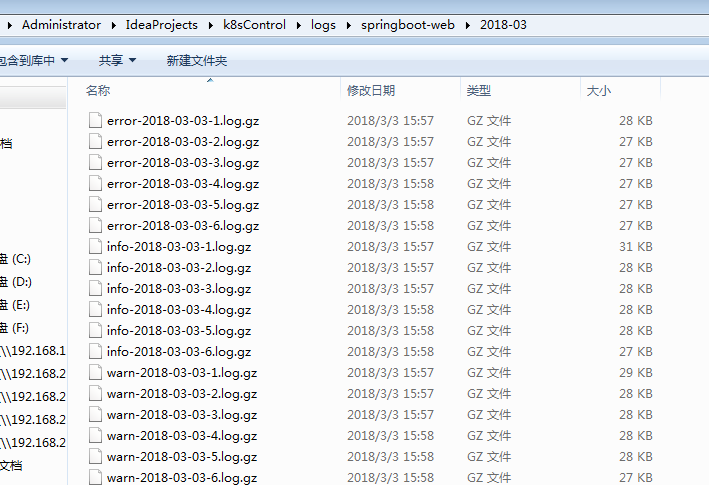
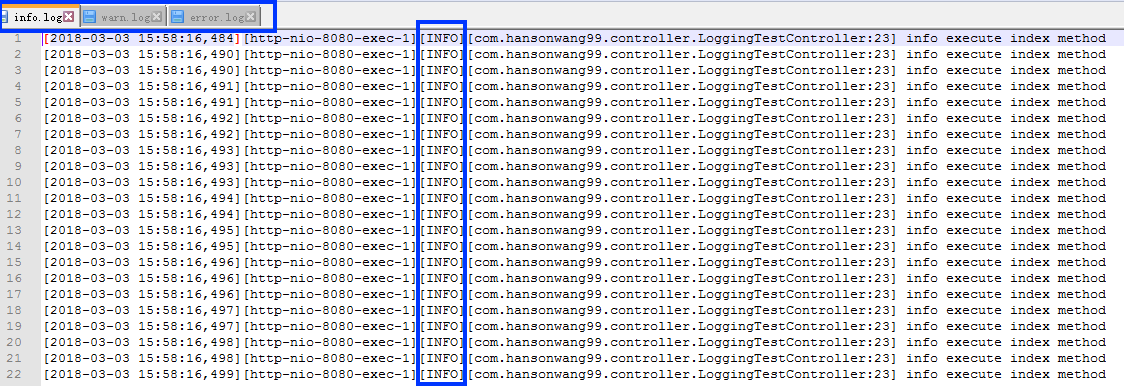
日志会根据不同的级别存储在不同的文件,当日志文件大小超过2M以后会分多个文件压缩存储,生产环境的日志文件大小建议调整为20-50MB。
后记
作者更多的SpringBt实践文章在此: